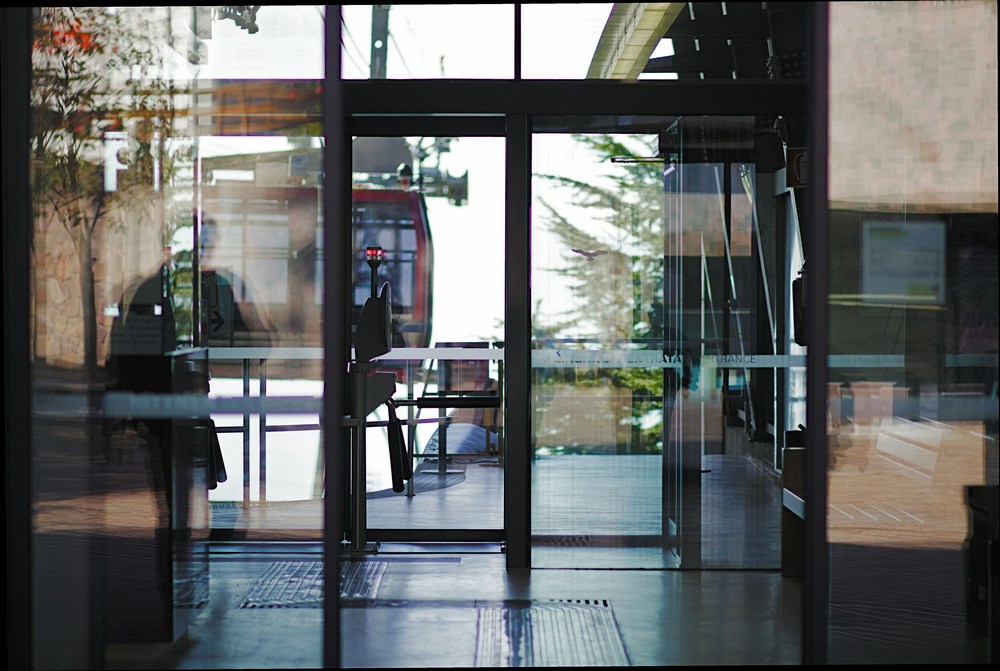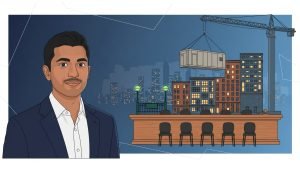Last Updated on October 30, 2025 by teamobn
Commercial roofing companies often need to carry out renovations on buildings that are still occupied. During a roof replacement, you’ll unlikely be able to schedule the work when the building is empty, which means tenants will be present while the work is ongoing.
Even though roofing work can cause disruption, many building owners and tenants understand that it’s vital maintenance work. If you demonstrate a commitment to minimizing the impact of the re-roofing process on tenants, the building owner may be more inclined to hire you again for future roof repairs or additional buildings in their portfolio.
Contents
Tenant-Friendly Commercial Roof Replacement: 6 Ways to Reduce Stress
Considerate roofing work can lead to more business, as property managers and tenants will likely share positive feedback. Below, we detail some strategies to make your roofing project less disruptive to tenants.
Consider Traffic and Parking
Even though it might seem minor, blocking someone’s parking spot can ruin their day. To prevent this, make sure building tenants can access the parking lot while you work. Deliver all roofing materials at once and, if possible, unload directly onto the roof to minimize your use of parking space and time.
If you need to store materials or equipment like a dumpster, boom truck, or machinery in the parking lot, set aside a designated area marked with tape. Consult with the owner or property manager to choose a spot that won’t disrupt tenants, avoiding locations in front of exits or entrances, especially fire exits.
Avoid storing materials on the lawn or landscaping, as it can damage the grass unless explicitly allowed by the owner. To further reduce your impact on the parking lot, encourage employees to carpool or park in nearby lots. This is especially advisable if the building has limited parking space or is usually full, ensuring tenants aren’t inconvenienced by walking farther than usual.
Opt for Premium Roofing Materials
The market offers a wide variety of materials for replacing commercial roofs. There have been significant advancements in roofing technology over the years. Building owners now have numerous options unavailable when their buildings were originally constructed.
A local roofer notes that asphalt shingles remain a traditional and popular choice in North America. Slate is also a favored option due to its durability and long lifespan.
Modified bitumen roofing, known for its enhanced tensile strength, is particularly suitable for flat roofs that experience regular foot traffic and has been successfully used in the United States. However, many business owners are now choosing metal roofing for its remarkable durability and longevity.
A growing trend is towards integrating sustainable energy solutions into roof construction and renovation. Installing solar panels during new roof installations has become common, reducing the energy needed to heat and cool buildings of various sizes.
Grant Entry to the Building
To minimize your presence in the building and allow tenants to carry on their day, commercial roofing contractors should avoid using stairwells and main elevators whenever possible to minimize their presence in the building and allow tenants to carry on their day should avoid using stairwells and main elevators. If a service elevator isn’t available, consider using a hydraulic lift to transport materials to the rooftop.
Attempt to schedule roof replacement outside of regular business hours. Some businesses may have specific peak times to avoid, so consulting with the building owner about these hours can be beneficial. Below are examples of typical business hours and suggestions for working around them:
- Restaurants and bars: Aim to complete work before the lunch rush or take breaks during it.
- Churches and religious buildings: Avoid working during service hours or religious holidays.
- Schools: Plan work for weekends, after school, or during summer holidays and breaks.
- Retail: Avoid roofing during Christmas or other busy seasons.
- Apartments and residential buildings: Try to finish before residents return home after 5 p.m. It’s crucial to start work after people are awake.
- Hospitals, grocery stores, gyms, and nursing homes: While these may operate 24/7, they have peak times to avoid. Ask the building manager or owner for details. Hospitals also often require low VOC roofing materials without torches or hot asphalt.

Tackle Additional Safety Issues
Building tenants may not be aware of safety protocols, so ensure the owner or property manager informs them about potential safety issues, even those that may seem routine. For instance, during the tear-off process, debris might fall, particularly near the dumpster. It’s important not to compromise the safety of people outside the building.
Ensure the owner or property manager advises tenants to avoid the area until the complete tear-off process. Once finished, inform them accordingly. Communicating potential safety issues to tenants without causing unnecessary alarm can be tricky.
While detailing every safety aspect might make the work appear more dangerous than it is, erring on the side of caution is preferable. Encourage the owner or property manager to provide tenants with the necessary warnings.
If you find that the owner or property manager is not issuing the required notices and you cannot persuade them to do so, consult with local legal counsel before proceeding with the work. If the building has health and safety officers, meet with them to discuss relevant safety protocols. This meeting also provides a chance to address any concerns they might have.
Inquire About Roof Removal
When selecting a certified contractor for roof repair and replacement, ensure you inquire about the specifics of commercial roof removal, especially whether they will handle the removal of your old roof.
Typically, discard the old roofing material rather than installing new shingles over it. If the roofer skips removing the old material, and consequently the thorough inspection that follows, soft, spongy, or rotten spots in the underlayment may go unnoticed, preventing you from fully benefiting from a new roof. A quick fix might result in bigger and more expensive issues later on.
Consider Odor, Fumes, and Dust
Although seldom dangerous, roofing materials emitting fumes or odors can annoy tenants. Some tenants are especially sensitive to scents, and many may worry about potential harm. It’s best to minimize these situations when possible.
If your installation produces fumes or dust, ensure that the owner or property manager has informed tenants about the possibility of unusual odors. Supply building owners with up-to-date information on health and safety concerns related to your products. Demonstrate to the building owner any special measures you are taking to protect tenants from exposure to fumes.
Endnote
By considering the tenant’s needs throughout the re-roofing process, you can reduce their concerns during the project and complaints and calls afterward. Most tenants and property managers understand that your work enhances their building for the long term. Open communication and efforts to minimize disruption will also help build a strong reputation.






